Wine & Design: a world of oenophile wonders and spirit-raising accoutrements
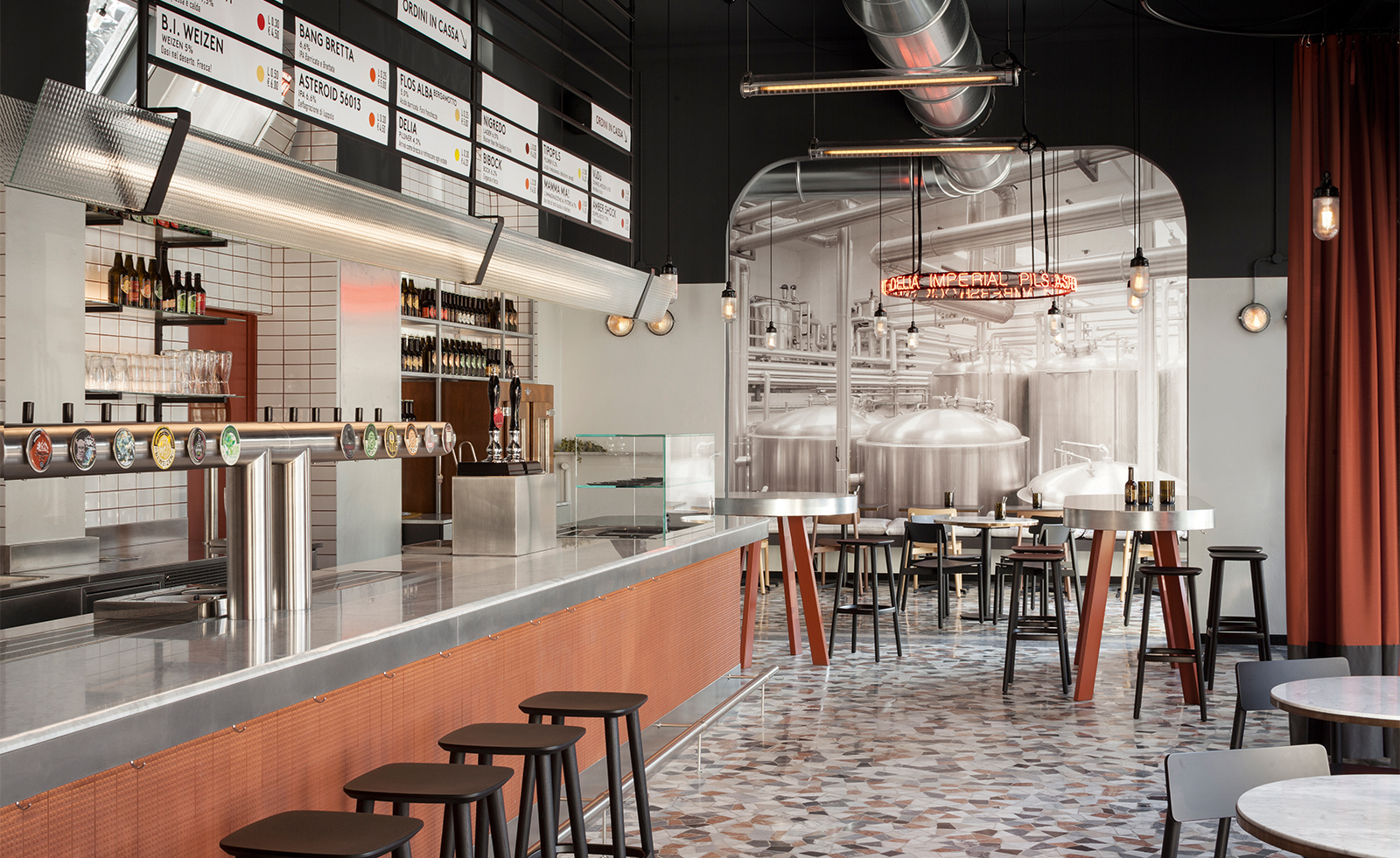
Brew romance
28 May
This Milan brewery and tasting room, a new outpost of artisanal beer pioneer Birrificio Italiano, bears the distinguished and sophisticated design style of local architecture studio and long-time Wallpaper* collaborator DWA. Founded by Frederik De Wachter and Alberto Artesani in 2005, DWA produces interiors, furniture and temporary installations (including a few of our Wallpaper* Handmade exhibitions). The studio’s concept for Birrificio Italiano combines existing features of the 1930s building, such as the dramatic terrazzo floors, with contemporary additions that include a bar made of steel, marble and brick-coloured porcelain, as well as seating and tables in the tasting area. The beer menu reflects Birrificio Italiano’s focus on traditional brewing techniques, combined with research into taste and ingredients.
Birrificio Italiano, 12 via Ferrante Aporti, Milan. Writer: Rosa Bertoli
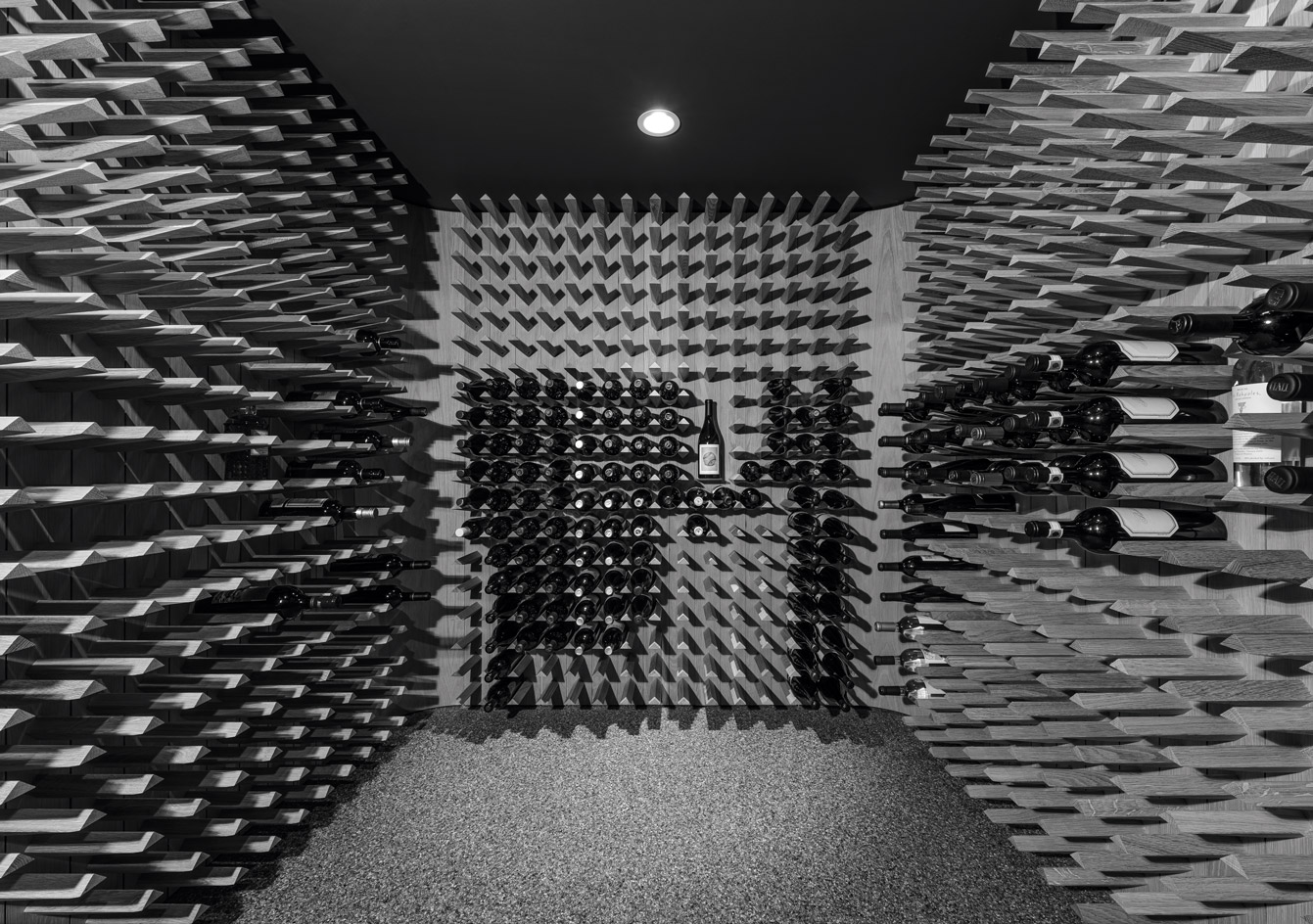
Grape and favour
8 May 2018
When a private client asked Napa-based architect Brandon Jørgensen for advice about building his wine collection, Jørgensen not only introduced him to a series of small, independent wineries and larger wine estates, he also created a bespoke room for him to house everything. The compact space, measuring 8ft x 8ft x 8ft, features a modular display and storage system crafted in eastern white oak in collaboration with Oakland-based Pacassa Studios, and is designed to hold more than 2,000 bottles. ‘The supports create a space that unifies the collection while allowing it to be organic and evolve over time,’ says Jørgensen. The collection already includes great local wines, such as a vintage Larkmead Cabernet, but Jørgensen estimates it will take 15 to 20 years to fill the room.
Writer: Rosa Bertoli

Swing state
26 March 2018
The Fraction collection by Chicago-based designer Christopher Gentner is the result of a year-long exploration of creative processes and a curious piece of research into serving and presenting drinks. The most remarkable design from the capsule collection is the ‘Swinging Drink Table’ (above left), described by Gentner as ‘a table for your drink that is already a little drunk’. The pieces are made from brass, using both CNC machining and traditional craftsmanship, and finished by hand to achieve a patina. Suspended from the ceiling, the drinks table features a circular top just large enough to hold a single bottle or glass, and is pictured here alongside Gentner’s brass and silicone ‘Stool 1’ – the pair are sure to get cocktail hour going with a swing.
‘Swinging Drink Table’, $725, by Christopher Gentner, for Gentnerr. Writer: Rosa Bertoli
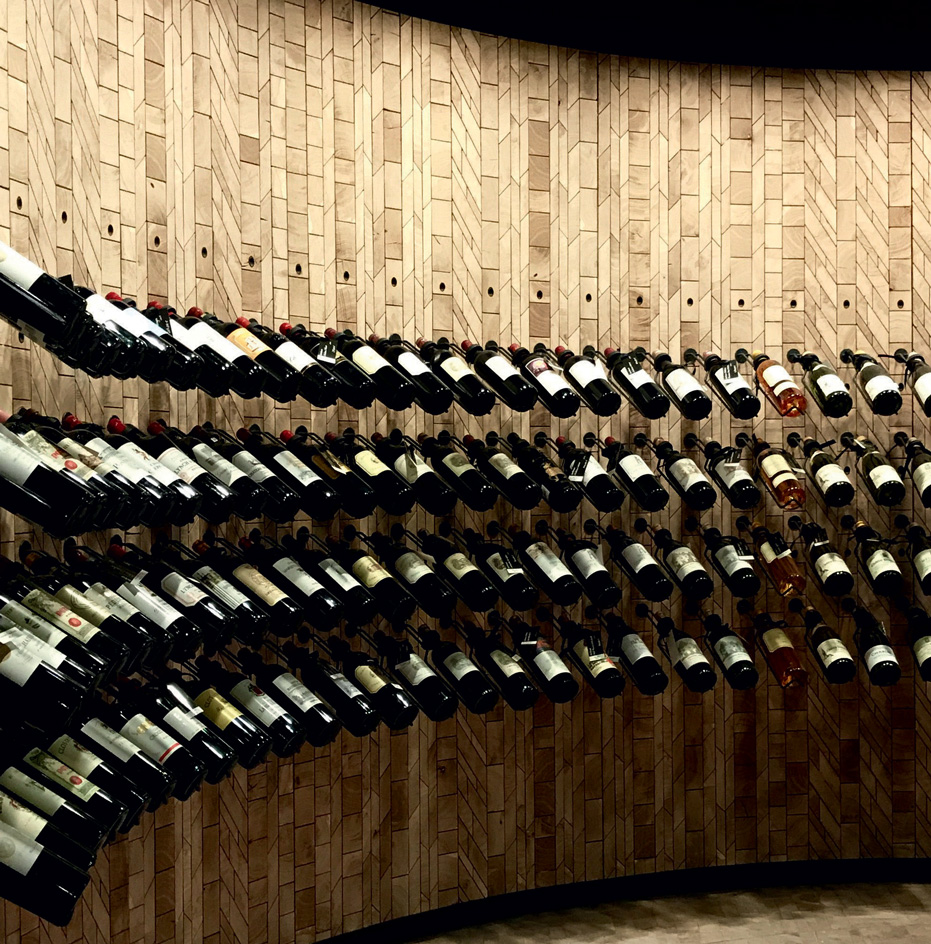
Great Wall
9 February
Located on the tip of Victoria’s Mornington Peninsula, the Point Leo Estate has been a private retreat for the last 25 years. Now its owners, the Gandels, have opened its doors to the public, who can explore its 134-hectare vineyard and park, dotted with over 40 sculptures by leading artists such as Anthony Pryor and Tony Cragg. At its heart, perched on the estate’s highest elevation, is a new building by Melbourne practice Jolson. Its façade is a serpentine 6m-tall concrete wall (pictured), with hand-burnished concave curves that mimic the curvature of a wine barrel. The wall twists and turns to create a circular courtyard with a solitary Australian bottle tree in its centre, and a forecourt that perfectly frames a steel arch by Inge King. The sculptural structure conceals a cellar and two restaurants with expansive glass windows opening on the vineyards beyond.
Point leo estate, 3649 Frankston-Flinders Road, Australia. Writer: Dimity Noble
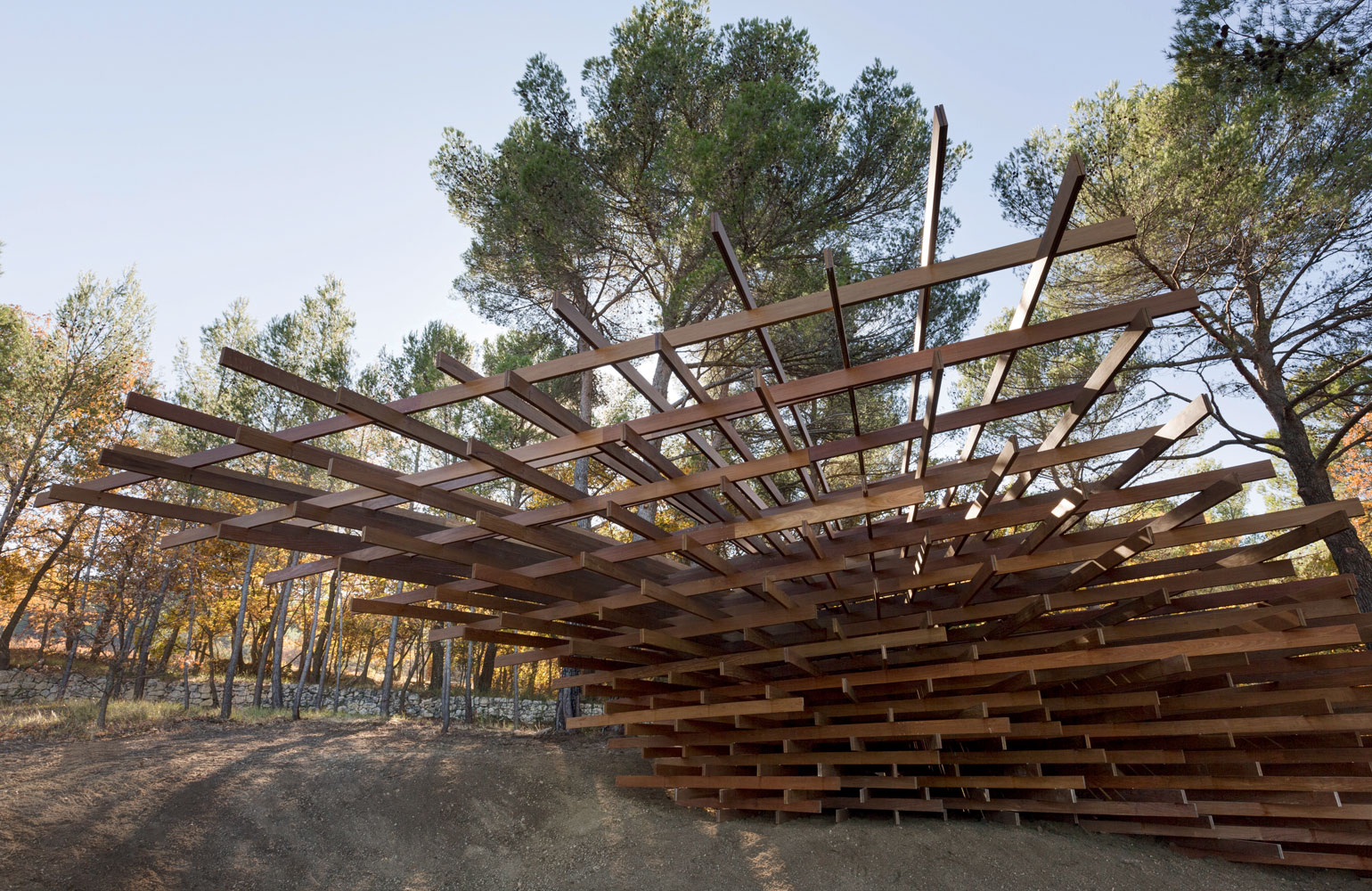
Wood notes
11 January 2018
Over the course of his career, the Parisian designer Raphael Navot has developed a distinctive aesthetic, combining wooden surfaces and textures to dazzling effect. His latest effort is a geometric wooden mosaic that forms the backdrop of the new wine cellar at La Grande Épicerie. Just opened on Paris’ Right Bank, it is the second outpost of the gourmet food hall of the Le Bon Marché department store. Working closely with the retail emporium’s own architecture team, Navot created a curved wall and circular floor for the cave, where the store’s most exceptional grands crus are displayed in a seemingly floating arrangement. 80 rue de Passy.
Writer: Rosa Bertoli.

Off grid
5 January 2018
Since 2002, Château La Coste has combined winemaking, art and architecture across its 600 acre Provençal estate, which houses artworks by the likes of Louise Bourgeois and Alexander Calder, and structures by architects such as Jean Nouvel and Frank Gehry. Its latest commission is a pavilion by Japanese architect Kengo Kuma. Artists and architects invited to contribute to Château La Coste’s impressive collection are asked to draw inspiration from the countryside of Provence, and Kuma has delivered. His design takes its cues from the region’s renowned light, which has inspired artists from Cézanne to Picasso. Kuma named his piece Komorebi, a Japanese word describing sunlight filtering through trees, which he represented with an asymmetric grid of Brazilian wood beams. Offering no protection from the elements but instead allowing for a connection with the natural surroundings, it is far from your typical shelter. Perched on a hill overlooking the Luberon valley, Kuma’s pavilion is a truly sculptural object in conversation with the landscape around it.
Writer: Rosa Bertoli
Wallpaper* Newsletter
Receive our daily digest of inspiration, escapism and design stories from around the world direct to your inbox.
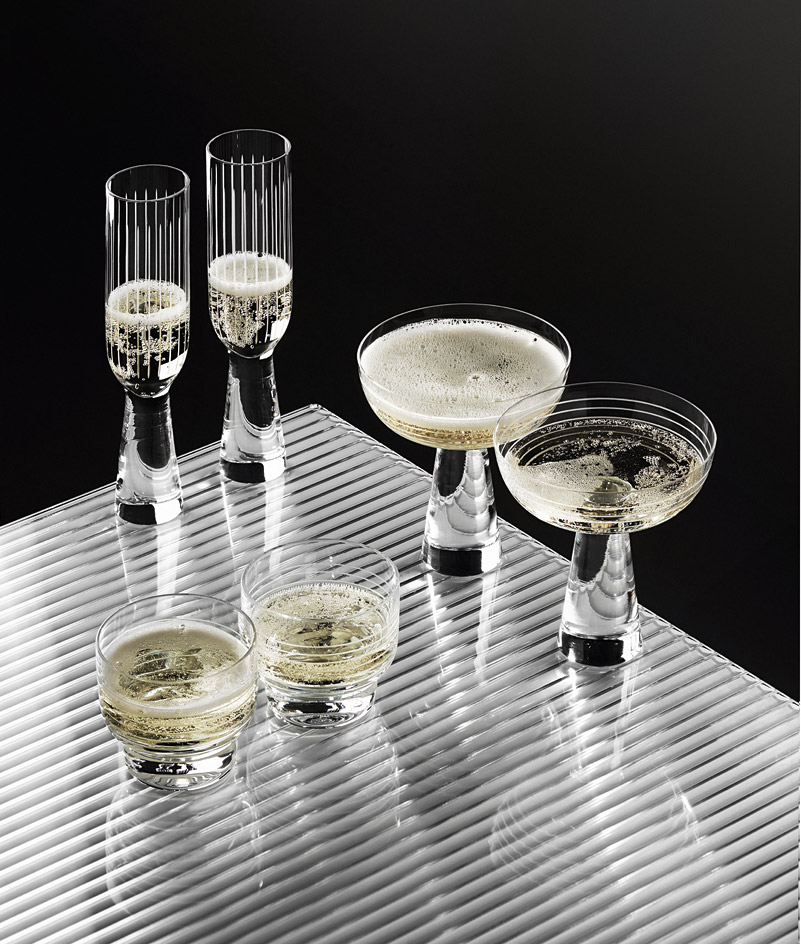
Single story: The Vault, Seoul
11 December 2017
In 2015, we commissioned British architect Sally Mackereth and Royal Salute to create a whisky bar for our annual Handmade issue. The collaboration proved so successful that it has now progressed into the Scotch whisky brand’s first tasting lounge. Located in Incheon’s Paradise City, the Vault offers a truly immersive experience. Mackereth has distilled the company’s ethos into an opulent space with elements inspired by the whisky-making process: walls are made of wooden slats taken from the oak barrels used to age whisky; the floor of the private tasting room (pictured) features porcelain details in a tribute to Royal Salute’s iconic flagon; and a plinth for the brand’s older blends is aptly crafted from 8,000-year-old Neolithic wood. The lounge also includes a complete whisky library, an olfactory bar and a maturation bar offering personalised tasting experiences.
Paradise City Resort, 186 Yeongjonghaeannam Street, Jung-gu, Incheon. Writer: Rosa Bertoli. As originally featured in the December 2017 issue of Wallpaper* (W*225)
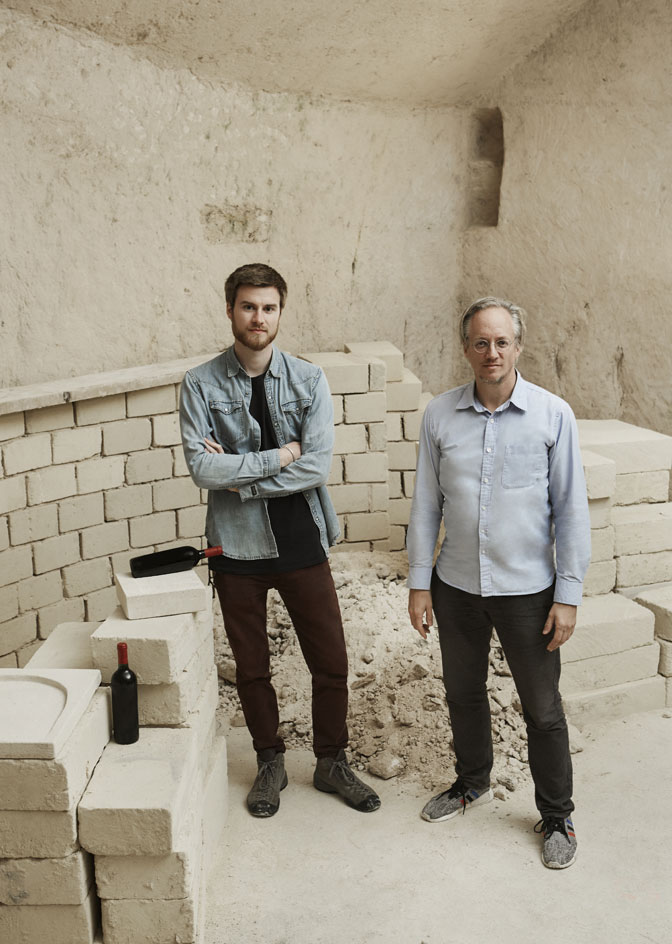
White lines: English sparkling wines bubble up
30 November 2017
Many wine connoisseurs appreciate an English fizz for its vivacity, a quality not always evident in champagne – something to thank England’s cooler climate and chalky soils for. Alongside an exquisite offering from Kent winery Chapel Down – Kit’s Coty Coeur de Cuvée (£100 for 75cl), which made headlines earlier this year as the country’s most expensive sparkling wine – other local producers have been putting out first-rate fizz, including Digby Fine English’s Reserve Brut 2009 (£99 for a magnum), a blend of chardonnay, pinot noir and pinot meunier (the holy trinity in champagne) harvested in southern England. Also prominent on the fizz front is the more-established Nyetimber estate in West Sussex, whose Blanc de Blancs 2009 (£45 for 75cl) is recognised as an exceptional blend with a fine ageing process.
Writer: Rosa Bertoli. As originally featured in the December 2017 issue of Wallpaper* (W*225)
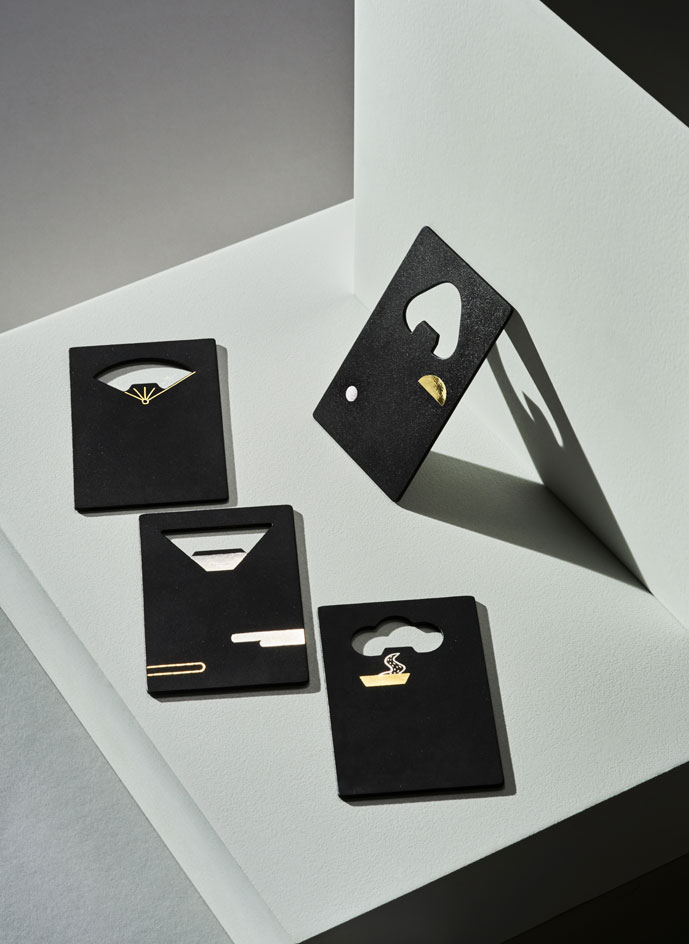
Going underground: Enoteca Dai Tosi, Matera
5 June 2017
Perched atop a mountain in southern Italy, the city of Matera is a cluster of cave-like stone buildings forming a Unesco world heritage site. Entrepreneur Gian Paolo Buziol decided to open a space that would celebrate Matera’s beauty and provide a meeting point for locals.
His wine cellar, Enoteca Dai Tosi, opening in June, is located in a ‘sasso’ (a traditional building with an underground space, excavated two or three floors deep into the mountain rock) renovated by architects De Vylder Vinck Taillieu. ‘They have enhanced the stone without changing the spirit of the place,’ says Buziol of the architects, who designed the space as a cascade of staircases and vaults.
The enoteca will offer a large selection of Italian wines, which Buziol travelled the country to select, along with sommelier Alessio Marin. ‘The space is part of the history of Matera,’ says architect Jan De Vylder, ‘but also makes new history.’
Via Bruno Buozzi 12, Matera. Writer: Rosa Bertoli. As originally featured in the June 2017 issue of Wallpaper* (W*219)
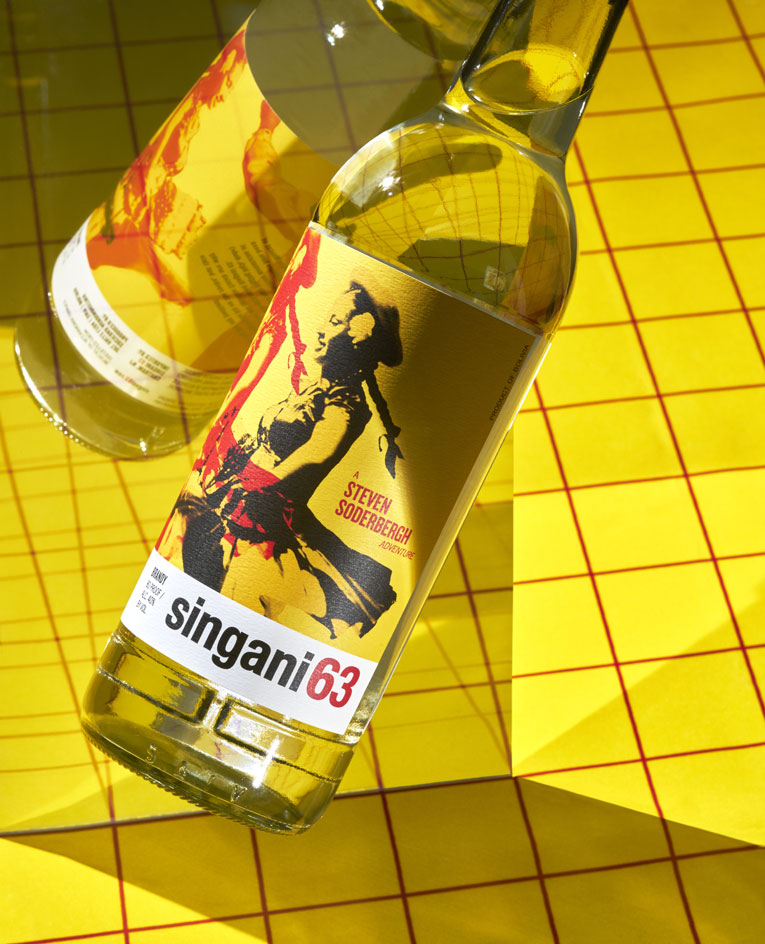
Lifting the lid on craft: bottle openers by BCXSY and Nakajima Zougan, from Mujun
3 June 2017
Boaz Cohen and Sayaka Yamamoto of Amsterdam design studio BCXSY have created a collection of five bottle openers for local shop Mujun. The store specialises in traditional products from Japan, as well as collaborations between Japanese craftsmen and Dutch creatives.
It hosted a pop-up workshop earlier this year, where BCXSY worked with family company Nakajima Zougan, an expert in the Japanese damascene technique. A traditional Kyoto craft, the technique was used for swords and armour. It consists of an inlay of pure gold and silver on an iron base, which is then engraved and allows for very detailed designs. BCXSY created a series of minimal decorations that combine Japanese visual archetypes with playful imagery.
€99 per bottle opener. Writer: Rosa Bertoli. As originally featured in the June 2017 issue of Wallpaper* (W*219)
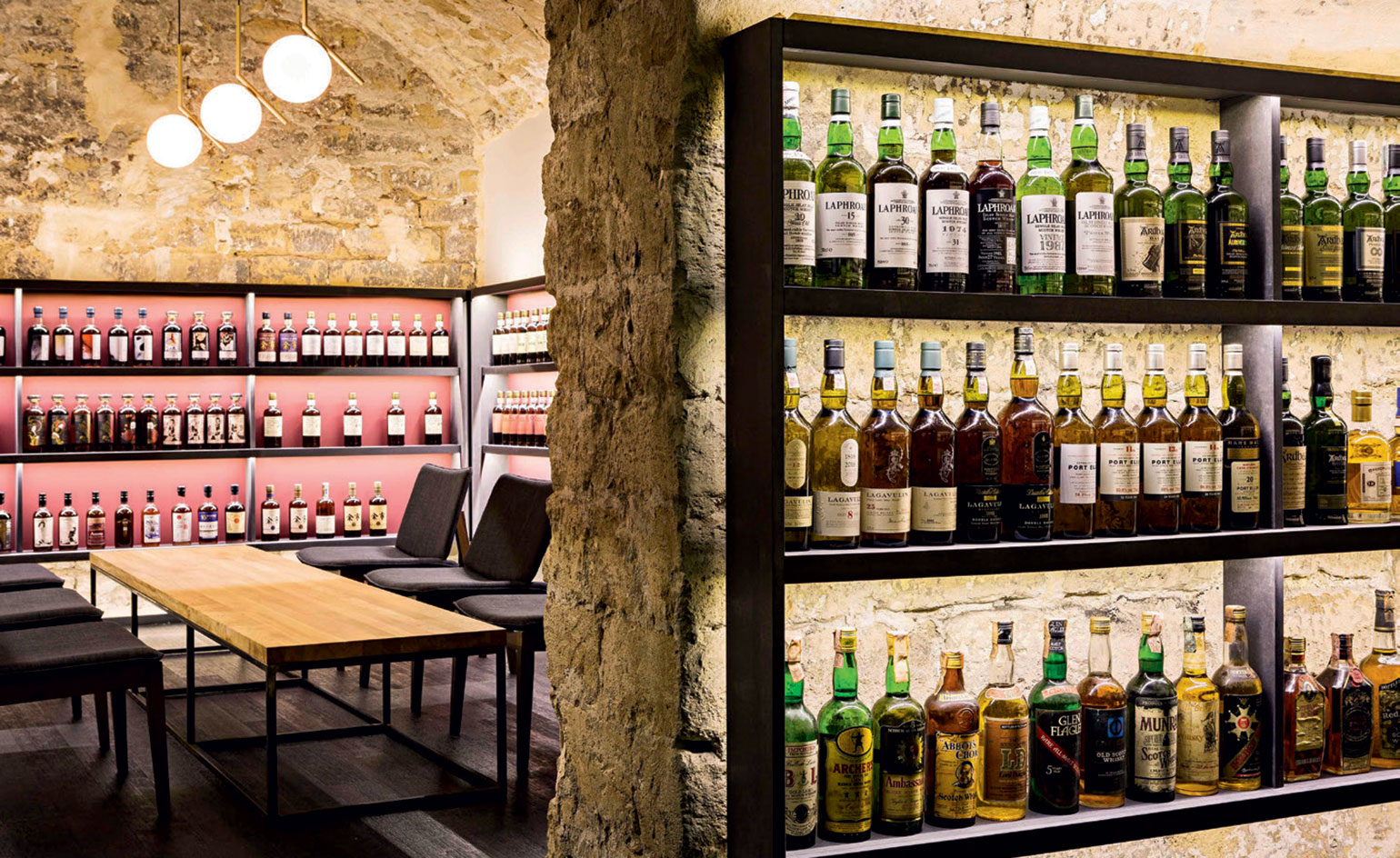
Cinematic spirit: Singani63’s new label design
30 May 2017
Film director Steven Soderbergh and Hollywood concept artist Joanna Bush have given Soderbergh’s Singani63 spirit brand a cinematic redesign. Singani is a little-known Bolivian spirit made from aromatic Muscat of Alexandria grapes distilled at altitude, in Soderbergh’s case at Casa Real distillery, 1,800m above sea level. He wanted the new design to reference the spirit’s 500-year heritage.
The bold, billboardesque graphic, in black and red screenprinted duotones, shows a dancer performing la rueda chapaca, the region’s traditional two-step; turn the three-quarter wraparound label to reveal her partner. Lowercase sans serif type on a white band is a nod to Sex, Lies, and Videotape, the film that launched Soderbergh’s career.
Writer: Sorrel Moseley-Williams
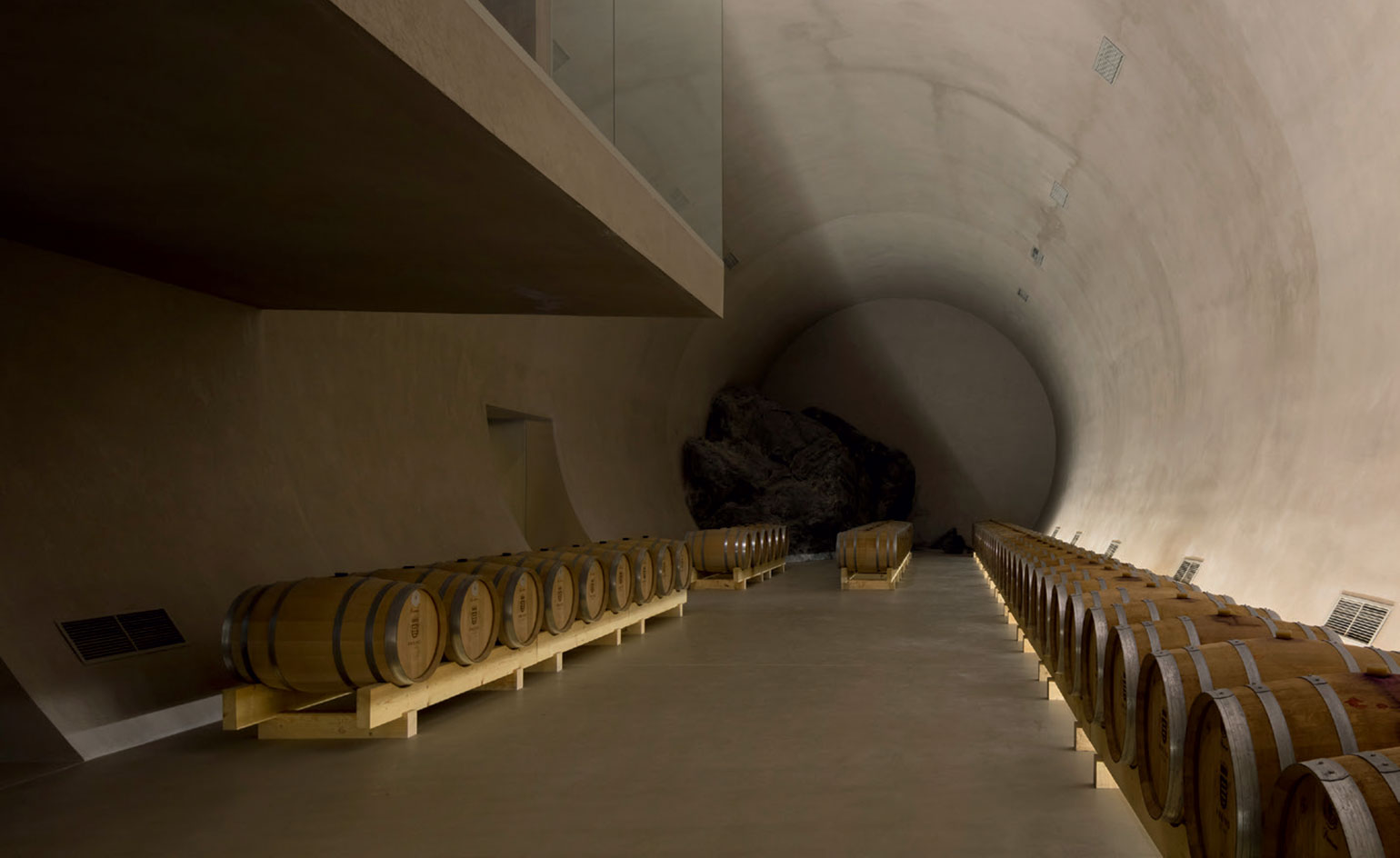
In a twist: Herdade do Freixo, Winery, Portugal
2 May 2017
Nestled in Portugal’s rolling Alentejo countryside, Herdade do Freixo winery is located just outside the whitewashed, terracotta-tiled town of Redondo. Here, wine is stored at a cool 40m below ground, in what resembles a minimalist concrete nuclear bunker. To reduce any visual impact on the Syrah vineyard above, local architect Frederico Valsassina designed a series of square shafts around the gaping rectangular entranceway. A protruding conical funnel at the structure’s heart allows plenty of air and light to enter the cellar, which is dug at the highest point of the 300-hectare estate.
Writer: Rupert Eden. As originally featured in the May 2017 issue of Wallpaper* (W*218)
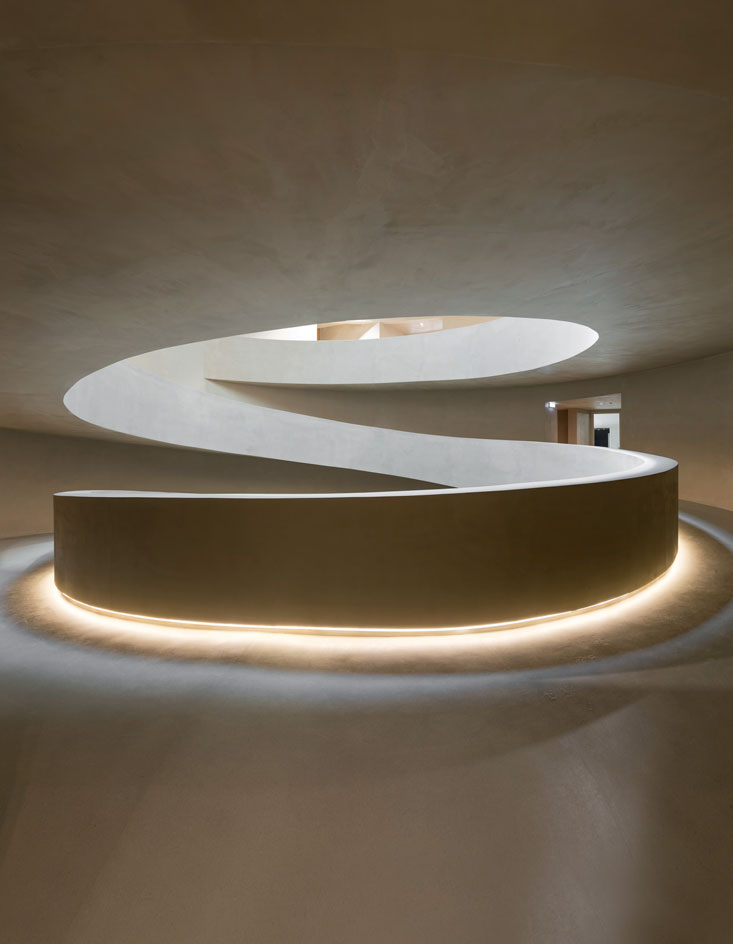
In a twist: Herdade do Freixo, Winery, Portugal
2 May 2017
Below the surface, a spiralling concrete ramp echoes the form of the Guggenheim Museum in New York, providing access to the three levels of the winery. Skylights are deliberately placed so visitors do not miss a trick, witnessing the grapes being unloaded before processing, the wine stored in oak barrels and its eventual bottling. The bright, high-tech interior, with its gleaming stainless steel vats, could pass as a Bond villain’s lair.
Although entirely subterranean, the cellar is self-sufficient, relying on gravity and natural light to minimise the energy consumed. State-of-the-art technologies are used in its winemaking, which is directed by chief oenologist Pedro de Vasconcellos e Souza.
Writer: Rupert Eden. As originally featured in the May 2017 issue of Wallpaper* (W*218)
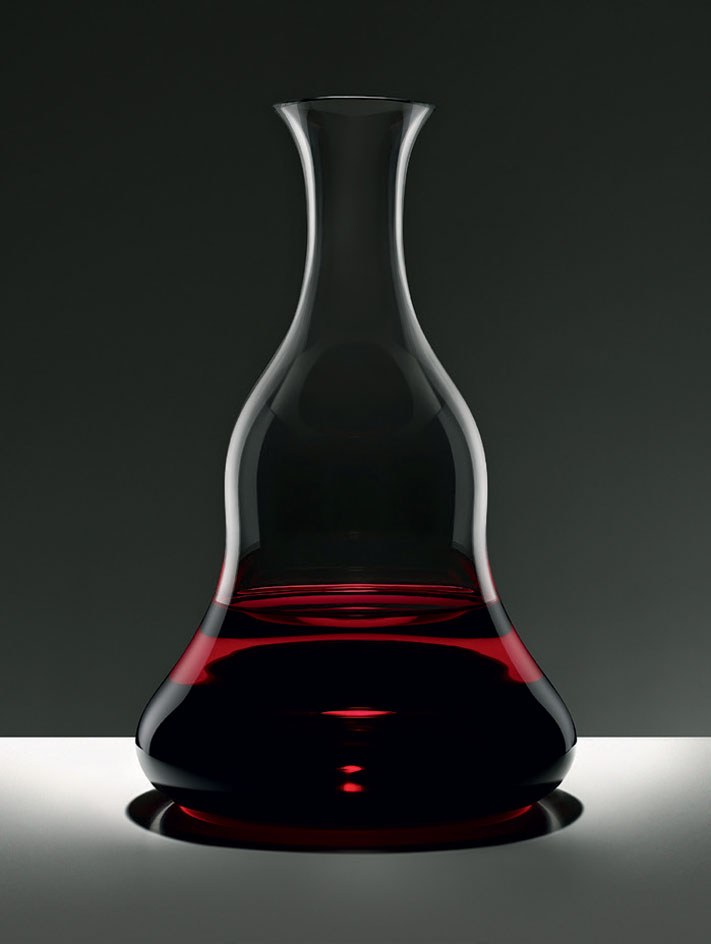
Art of glass: decanter, by Zwiesel Kristallglas and Álvaro Siza
30 December 2016
To celebrate the 260th anniversary of the Instituto dos Vinhos do Douro e Porto, a Porto-based institution that promotes and preserves local winery traditions, German glass manufacturer Zwiesel Kristallglas and Portuguese architect Álvaro Siza worked together to create the perfect decanter to serve the nation’s wines. Siza, who had already collaborated with Zwiesel Kristallglas on a line of wine glasses, developed a unique silhouette featuring undulating sides.
A special edition, to be launched on the Portuguese market, comes with a pouring funnel; Siza tested the decanter with this specially developed tool, which distributes the wine over the sides of the decanter as it is poured in, to allow for better airing of the liquid.
Price on request. Writer: Rosa Bertoli. As originally featured in the May 2017 issue of Wallpaper* (W*218)
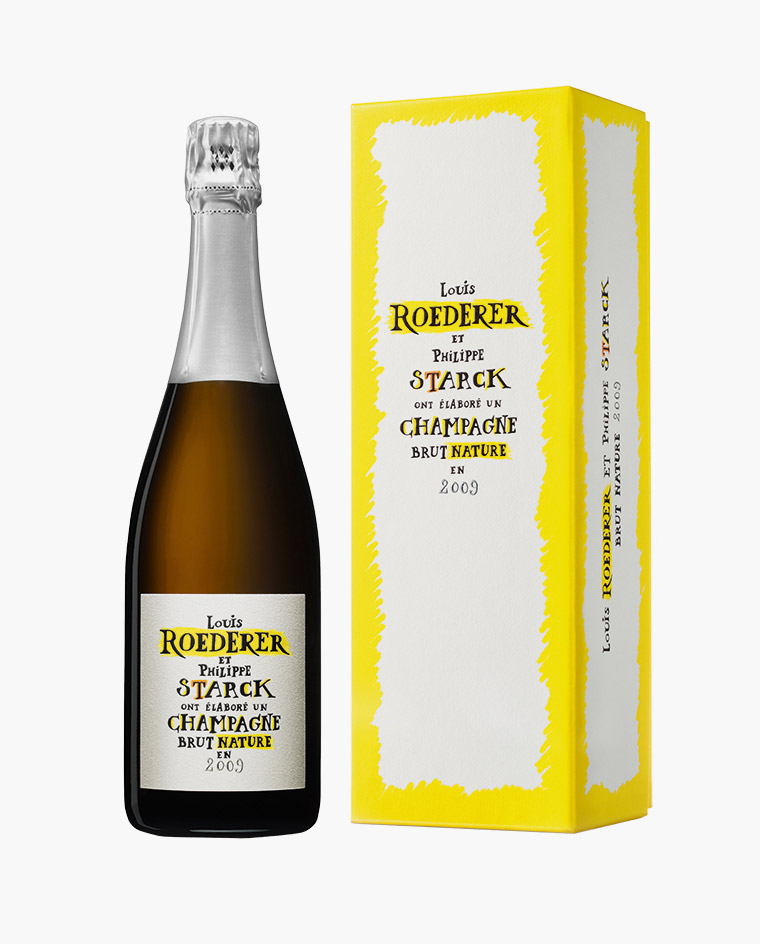
Simply does it: Philippe Starck’s packaging for Roederer
21 December 2016
Born of a conversation between French designer Philippe Starck, Roederer managing director Frédéric Rouzard and cellar master Jean-Baptiste Lécaillon, Brut Nature 2009 is a new champagne, conceived as simple and ‘honest’, created with a blend of Pinot Noir, Pinot Meunier and Chardonnay. ‘This is the least Roederer of all our champagnes, as well as our most modern,’ says Lécallion. ‘It was the perfect opportunity to move away from our usual habits and shake up our methods.’ Its presentation also breaks away from the traditional champagne opulence: Starck, in his second project for Roederer, created simple packaging, stripping it of logos and instead adding playful handwritten typography to the label, with felt-tip highlights.
Writer: Rosa Bertoli. As originally featured in the December 2016 issue of Wallpaper* (W*213)
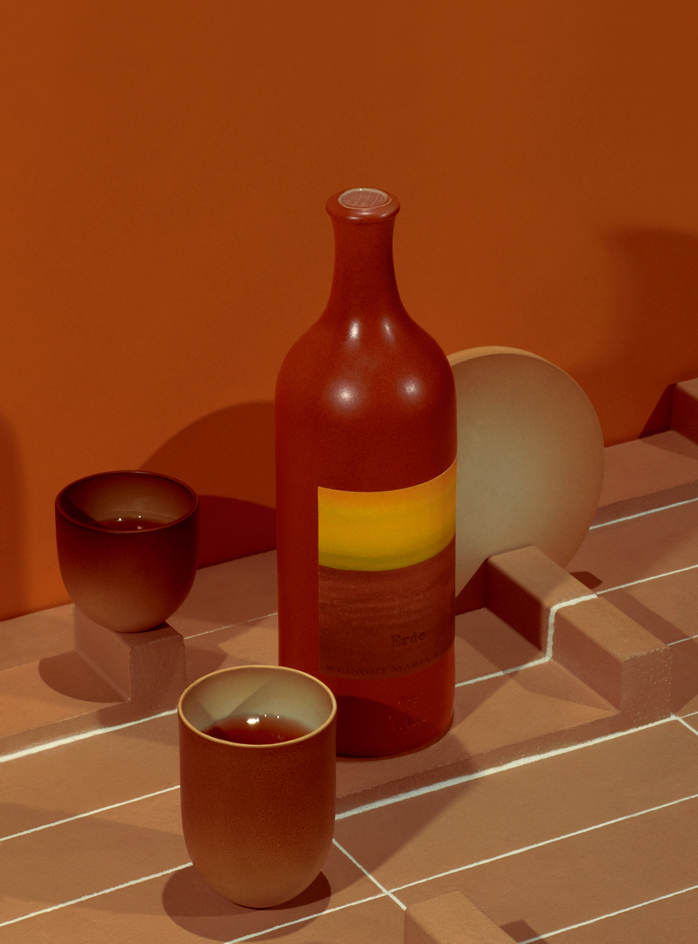
Orange juice: wine takes on a refreshing new hue
21 December 2016
Orange wine is emerging as a bold alternative to red, white and rosé. Using a centuries-old technique, the skins of white grapes are left on for months during maturation, giving the wine an intense texture and taste, as well as its unique shade. Austrian winery Weingut Maria & Sepp Muster’s 2013 Erde is one of the finest of the new breed. The biodynamic wine is made from a mix of Sauvignon Blanc and Chardonnay, and presented in a clay bottle (which helps the ageing process) with an abstract label by Austrian artist Beppo Pliem.
Pictured: Erde wine, £41, by Weingut Maria & Sepp Muster, weingutmuster.com. ‘Care for milk’ small cup, £50; medium cup, £55; plate, £100, all by Ekaterina Semenova, from Mint, mintshop.co.uk. ‘Tierras Artisanal Little L’ tiles, £4 each; ‘Tierras Artisanal Base’ tiles, £208 per sq m, both by Patricia Urquiola, for Mutina, from Domus, domustiles.co.uk
Writer: Rosa Bertoli. Interiors: Maria Sobrino and Olly Mason. As originally featured in the December 2016 issue of Wallpaper* (W*213)
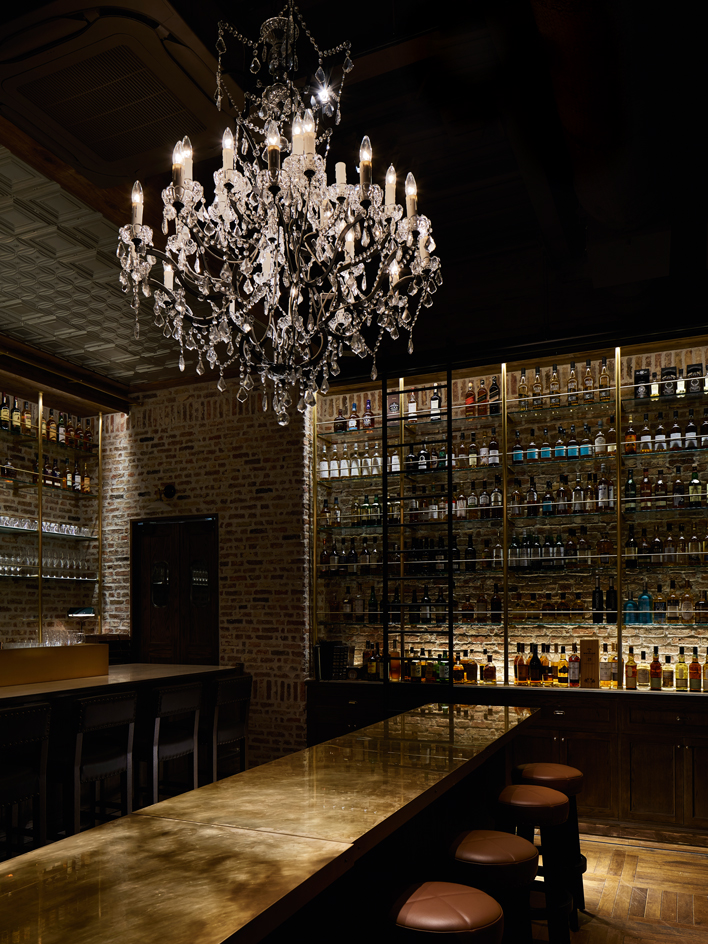
Kindred spirits: Tokyo Whisky Library
21 December 2016
Taking inspiration from the Multnomah Whiskey Library in Portland, Oregon, Tokyo now has its own athenaeum of fine distilled spirits. With more than 1,000 bottles to choose from, cocktails developed by Michito Kaneko (World Class Bartender 2015) of The Lamp Bar in Nara, and a limited run of Coedo beer, aged in Ichiro’s Malt casks, there is little chance of leaving the bar thirsty. The impressive selection of single malts and bourbons are lined up along the rough brick perimeter on underlit glass shelving, and there’s also a cosy lounge area with sofas and armchairs. A nice selection of snacks (salumi from Sadogashima, oil-pickled oysters), more substantial meals (Hida Wagyu beef steaks) and specially developed desserts should make diners feel as welcome as drinkers.
Writer: Jens H Jensen. As originally featured in the December 2016 issue of Wallpaper* (W*213)
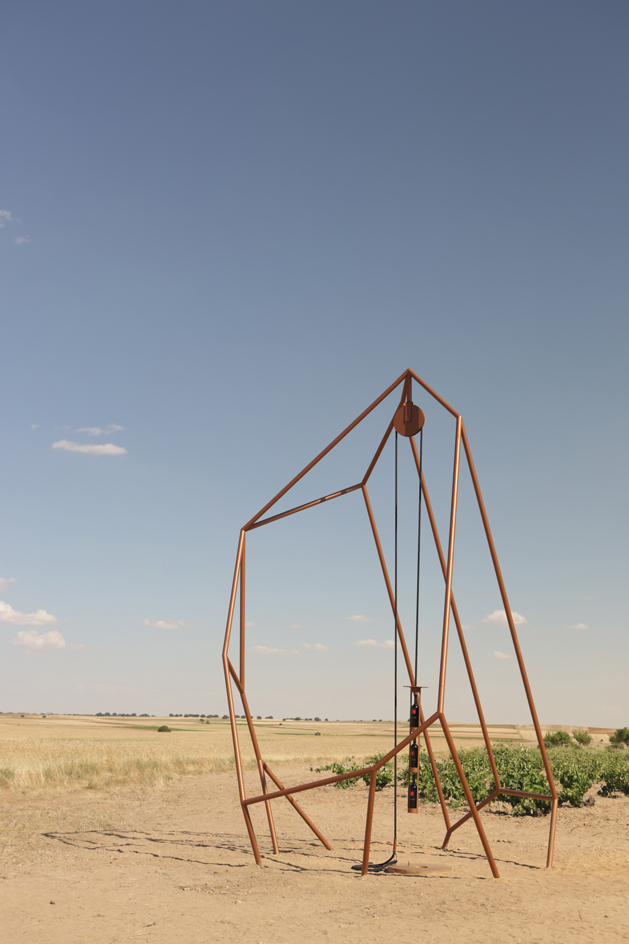
Ink well: installation at Bodega Numanthia
21 December 2016
The Numanthia winery, in the Toro region of north west Spain, is named after the ancient city of Numancia, which disappeared around 130BC when its inhabitants chose to die rather than surrender to Roman invaders. This year, Numanthia has chosen to pay tribute to its land, a harsh terroir which produces an extraordinarily black grape. The winery engaged Parisian design studio 5.5 to create an interactive installation that alludes to the inky blackness of the Toro grapes. Entitled Pozo de Tinta (meaning ‘ink well’), the structure, made from copper-coloured thermo-lacquered steel, connects to a well that contains a selection of wines chosen by the company’s cellar master. Cooled by the underground temperatures, the bottles can then be delicately extracted with a pulley, ready for tasting.
Writer: Rosa Bertoli. As originally featured in the December 2016 issue of Wallpaper* (W*213)
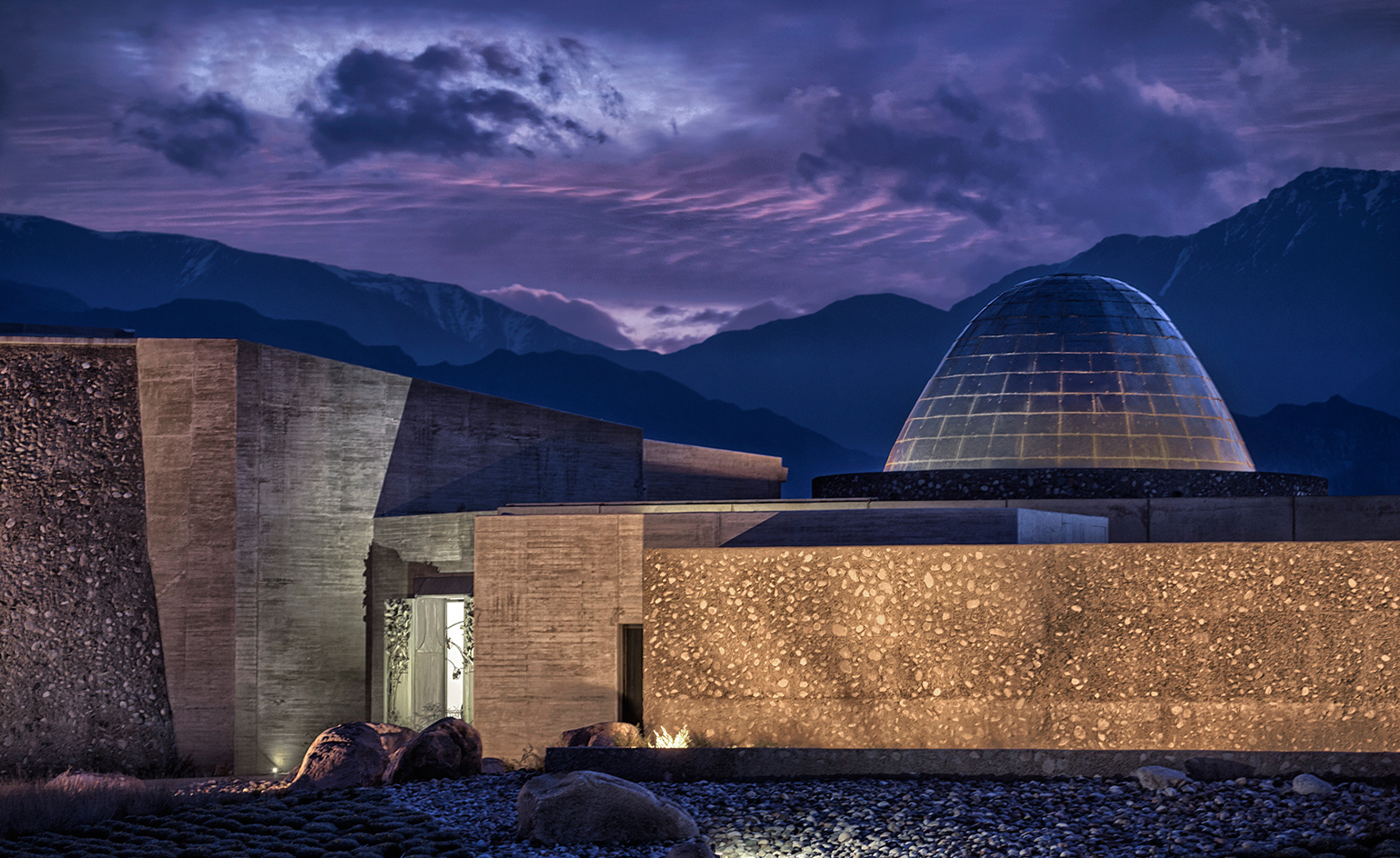
Rock star
2 November 2016
Excavating 1,000 trucks’ worth of Andean rocks in order to build a winery in Mendoza, Argentina, was something of a logistical challenge, but not one that fazed Sebastián Zuccardi. The third-generation agronomist and winemaker oversaw his family’s second project in Paraje Altamira in the Uco Valley – the aptly nicknamed Piedra Infinita (infinite stone) bodega – working with local studio Mora Hughes Arquitectos on its third winery. Located close to the snow-capped Andean foothills, Zuccardi Valle de Uco is as majestic as the dramatic backdrop, yet its angular concrete roof and sloping walls manage to blend seamlessly into the peaky landscape. Naturally, in a fitting tribute, some redundant rocks also made the final architectural cut. The winery’s production area is similarly austere, dominated by purpose-built concrete eggs, amphorae and tanks, each holding between 2,000 and 10,000 litres, ensuring a single vineyard plot ferments in one vessel. A walkway above the plant offers up a bird’s eye view of oenological operations. Despite the edgy angles, fluid circles also play their part, starting in the cellar, which houses vertical collections of Zeta and Zuccardi Q lines. Follow the spiral staircase to the domed tasting room directly above the cave, elevated over a sea of Malbec vineyards, before sampling a tasting lunch at the Piedra Infinita Cocina restaurant.
Photography: Philippe Frangnière. Writers: Sorrel Moseley-Williams, Rosa Bertoli. As originally featured in the November 2016 issue of Wallpaper* (W*212)

Silver belles: E&Co’s cocktail contrivances
2 November 2016
Historical silversmith Elkington & Co, founded in 1824, has recently relaunched as E&Co under the creative direction of Christopher Jenner, who devised a range, including a minimal cocktail set, that takes the company’s savoir-faire and gives it a modern spin. Also giving new forms to barware is the ‘Oh’ collection by Christofle, which is based on a simple, round-shaped motif and cast in bold shapes.
Pictured, ‘Sheer’ bowl, £100, by Miranda Watkins. Cocktail shaker, £1,500; cocktail muddler, £850, both by Christopher Jenner, for E&Co. ‘Oh’ fruit bowl, £368; ‘Oh’ ice tongs, £100, both by Christofle. Cocktail knife, £420, by Christopher Jenner, for E&Co. ‘Tracy’ cup, €44, by Kristina Niedderer, for Paola C. ‘Verona’ wine bar, £2,499, by Nathan Yong, for Heal’s. ‘Arbour’ wallpaper, £115 per roll, by Zoffany. Photography: Philippe Frangnière. Writers: Sorrel Moseley-Williams, Rosa Bertoli. As originally featured in the November 2016 issue of Wallpaper* (W*212)

Label mates: the Donum Estate, California
2 November 2016
In 2014, the Donum Estate winery, in Sonoma, California, started acquiring sculptures to dot around its vineyards, and its collection now includes works by the likes of Fernando Botero, Keith Haring, Subodh Gupta and Yue Minjun. In 2015, it acquired Ai Weiwei’s Circle of Animals, featuring 12 Chinese zodiac animal heads, and the evocative power of the Chinese artist’s work inspired Anne Moller-Racke, the estate’s president and winegrower, to commission him to work on the company’s bottle labels. ‘Wine can instill a moment of inspiration or madness; likewise can art,’ says Ai. From this autumn, the Donum Pinot Noir bottles will bear images from his Chinese zodiac sculpture, marking the beginning of a long-term collaboration between the artist and the winemakers.
Writers: Sorrel Moseley-Williams, Rosa Bertoli. As originally featured in the November 2016 issue of Wallpaper* (W*212)
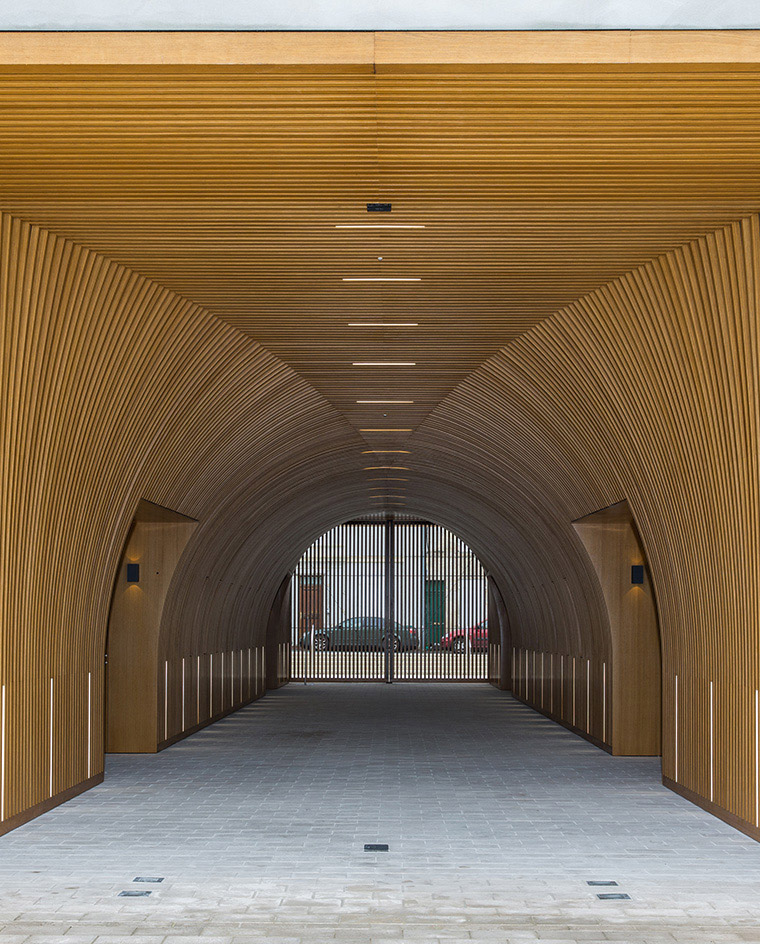
Bottle bank: Martell HQ in Cognac
22 August 2016
The house of Martell has been based in Cognac since 1715, when production began at a site called Gâtebourse. Last year, as the brand marked its 300th anniversary, it paid tribute to its history by restoring a 1929 bottling plant on the site that had closed in 2005, when production moved to nearby facilities. The Bauhaus-inspired building was renovated by local architect Olivier Brochet, who stripped it back to its original appearance and added a wooden passage (pictured) that connects it with a garden and plaza behind.
Writer: Rosa Bertoli. As originally featured in the September 2016 issue of Wallpaper* (W*210)
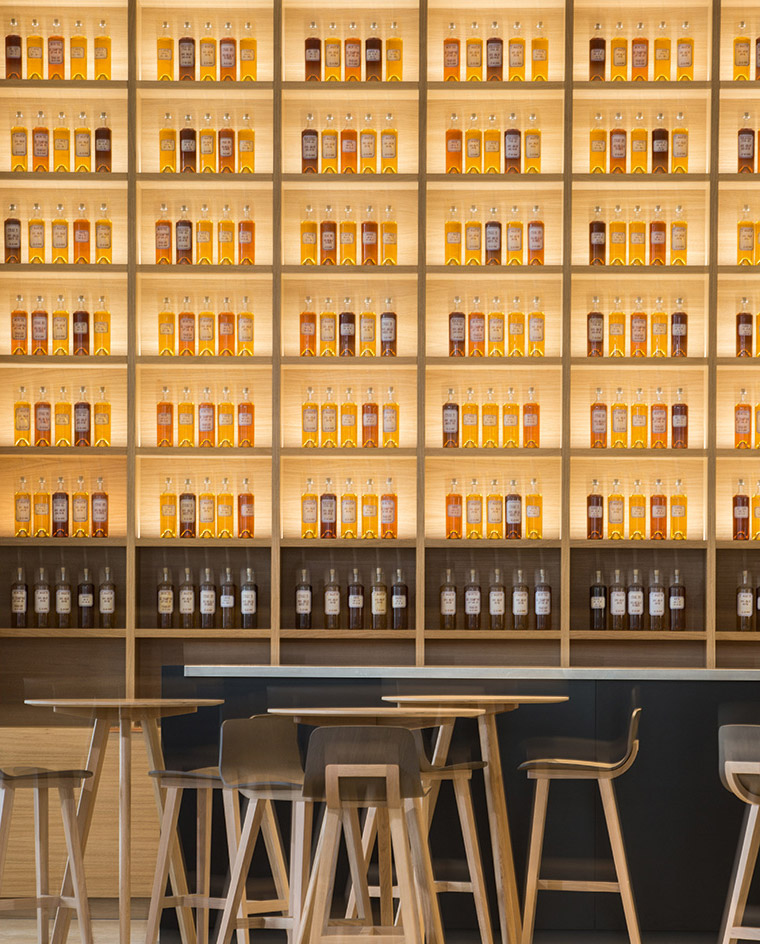
Bottle bank: Martell HQ in Cognac
22 August 2016
The inside space is designed to symbolise
the complexity of cognac, with a mix of straight lines and curves and warm colours. Recently opened, the building serves as a visitor centre and a boutique (pictured). It is
the first step in Martell’s wider development project for the area.
Writer: Rosa Bertoli. As originally featured in the September 2016 issue of Wallpaper* (W*210)
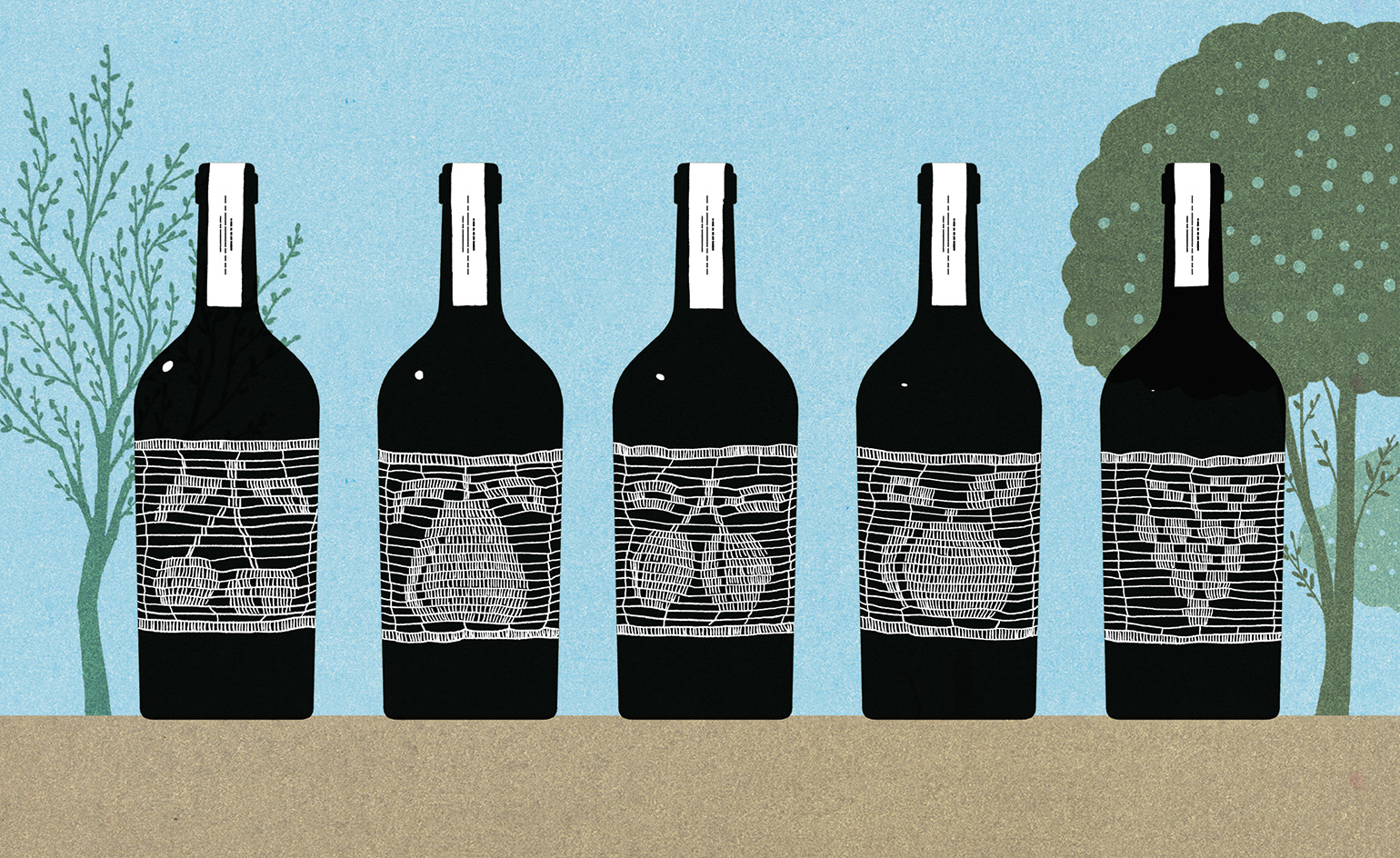
Bearing fruit: hand-picked brandy by Robert Rudinski
15 August 2016
Uniquely, Stockholm restaurateur Robert Rudinski’s new brandies pay tribute to the crafting skills of his Hungarian granny. The first limited edition is made from various fruits, hand-picked in the Hungarian village of Göncruszka, and depicted in lace crocheted by local seamstresses for the packaging, conceived by Garbergs_Project. The label acknowledges each farmer and the Bükkaranyosi Pálinka distillery. Available at Rudinski’s Bar Central, other Stockholm bars and eateries and online.
Illustrator: Michael Kirkham. Writer: Micha van Dinther. As originally featured in the September 2016 issue of Wallpaper* (W*210)

Spirit world: Veuve Capet vodka
15 August 2016
France’s Veuve Capet vodka is the project of entrepreneurs Côme Simphal and Timothée Duguit, based in Reims in the Champagne region. Their goal was to create a sophisticated vodka made in a quintessentially French way. The first vodka to be produced with Chardonnay grapes, Veuve Capet is distilled at Jean Goyard’s distillery, a centre for eaux-de-vie since 1911.
The branding is by French designer Sam Baron and his team, who created a bottle nodding to the vodka’s Champagne roots and a logo inspired by Marie Antoinette’s monogram, while the inside of the label is printed with old maps of the territory. It’s a new product steeped in history, Baron notes. ‘We [were] bringing to life this universe where past, present and future are constantly blended,’ he says.
Writer: Rosa Bertoli. As originally featured in the September 2016 issue of Wallpaper* (W*210)
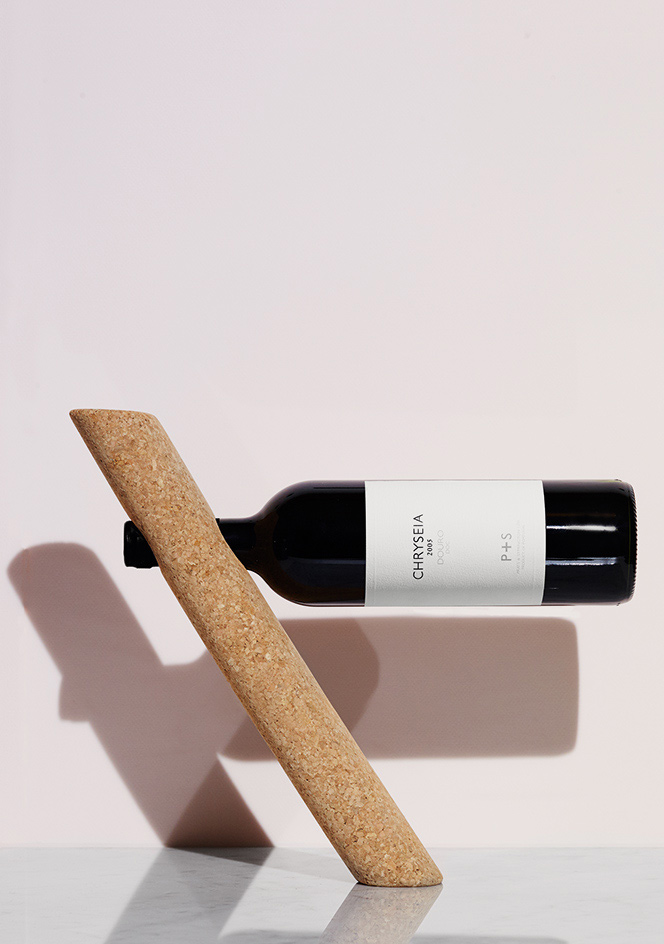
Balancing act: ‘Tipsy’ bottle holder, by Keiji Takeuchi
3 June 2016
Aptly titled ‘Tipsy’, this single-bottle holder, by Japanese designer Keiji Takeuchi, is manufactured by Portuguese company Amorim. It forms part of a series of objects, launched under the Materia brand, that experiments with different uses for cork in domestic environments, and the collection also includes a bathtub toy by designers Big-Game and salt and pepper shakers by Nendo. Optical illusion meets practical function in this simple cork stick, which magically stands when taking a wine bottle’s weight. Says the designer, ‘Tipsy is balance and art, like the work of a dancer.'
Writer: Rosa Bertoli. As originally featured in the June 2016 issue of Wallpaper* (W*207)
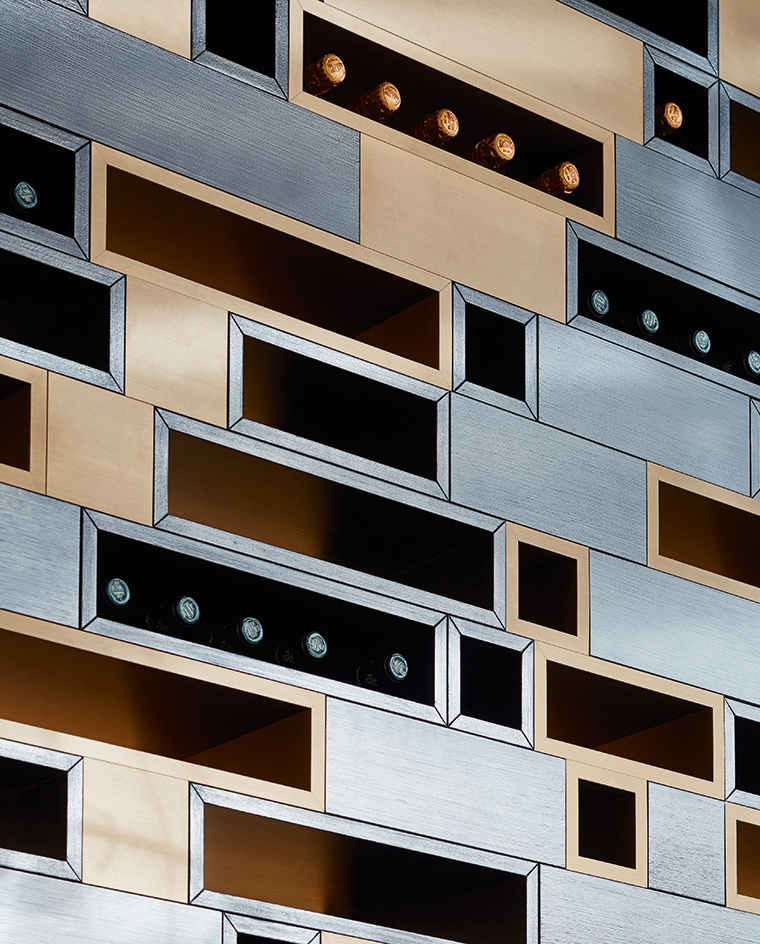
Drink in the view: Wine Palace, Monte Carlo
2 June 2016
Located at one end of Monaco’s Yacht Club, designed by Norman Foster, Wine Palace features a collection of 2,300 wines, champagnes and spirits, from all over the world, that have been meticulously sourced and stored in a bespoke climate-controlled warehouse. Bottles can be personally delivered in refrigerated vans to the private villa or superyacht of any client from Genoa to St Tropez, or bought direct from the boutique, which also features a tasting area and deli. Monaco-based architects Humbert & Poyet designed the space and have been mercifully sparing with maritime references but generous with opulent woods paved with bronze, copper, Versailles parquet and marble inlaid flooring. Favoured customers are invited behind a glass and bronze door to survey the store’s grands crus, which can be enjoyed in a private lounge that opens out onto a terrace overlooking the marina.
Writer: David Paw. As originally featured in the June 2016 issue of Wallpaper* (W*207)
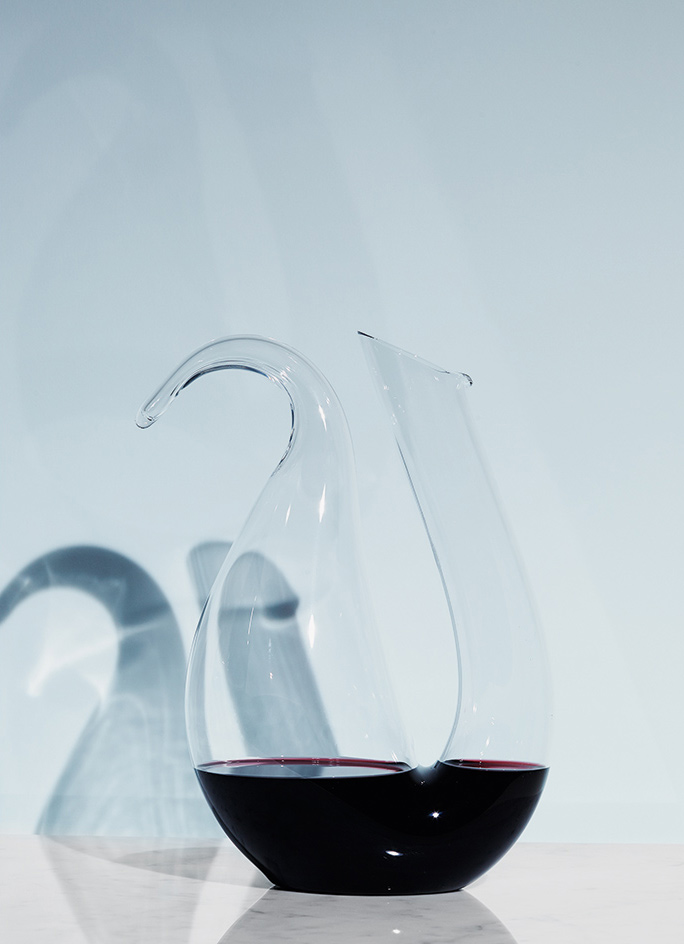
Coq au vin: ‘Ayam’ decanter, by Riedel
1 June 2016
Maximilian J Riedel, the 11th generation president of the eponymous family-owned glass company, wanted a special project to mark its 260th anniversary. Committed to maintaining his family’s tradition of entrepreneurship and innovation, he wanted to create something new and exceptional, a manufacturing challenge to establish a new design standard for the company. Riedel’s inspiration came from the Ayam Cemami, a rare Indonesian black chicken with a sinuous silhouette, with the company translating the curvaceous shape into a double decanter that allows wine to be aerated both when it is poured into it, and then again when it is poured out into the glass. A curl on one side of the decanter could work as a hanging hook, giving it a further functionality. Because of its double aeration, it’s a decanter that works particularly well with younger red wines, such as a fruity Californian cabernet.
Writer: Rosa Bertoli. As originally featured in the June 2016 issue of Wallpaper* (W*207)
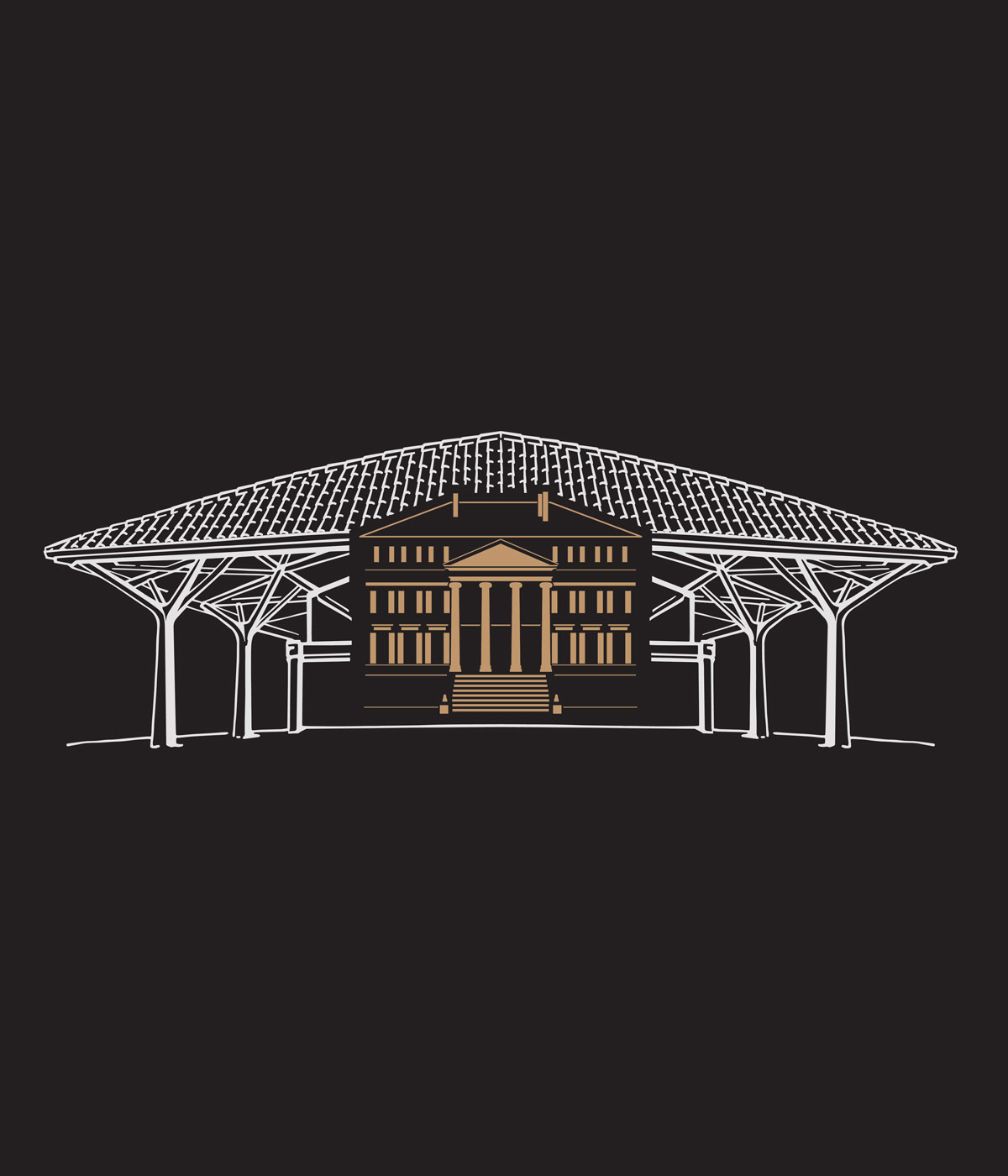
Message on a bottle
20 February
Exquisite wine and architecture have always gone hand in hand at Château Margaux, so it’s only fitting that the celebrated Médoc winery’s latest release – the first one-off bottle created by the estate – is a celebration of both. The special bottle of Château Margaux’s 2015 Premier Grand Cru Classé marks not just one but three momentous occasions: an exceptional vintage year; the bicentenary of its neo-palladian chateau; and the inauguration of a new building by Norman Foster, who was commissioned by Château Margaux’s owners, the Mentzelopoulos family, to design a cellar, vinothèque and research and development centre (see W*195). Featuring an enamelled image combining the estate’s original neo-Palladian pile and Foster’s new build, the black bottle is also an homage to the late Paul Pontallier, Château Margaux’s legendary winemaker, who joined the estate back in 1983 and oversaw the 2015 vintage in his final season.
Château Margaux 2015 Premier Grand Cru, price on request. Writer: Rosa Bertoli
Melina Keays is the entertaining director of Wallpaper*. She has been part of the brand since the magazine’s launch in 1996, and is responsible for entertaining content across the print and digital platforms, and for Wallpaper’s creative agency Bespoke. A native Londoner, Melina takes inspiration from the whole spectrum of art and design – including film, literature, and fashion. Her work for the brand involves curating content, writing, and creative direction – conceiving luxury interior landscapes with a focus on food, drinks, and entertaining in all its forms
-
 ‘Humour is foundational’: artist Ella Kruglyanskaya on painting as a ‘highly questionable’ pursuit
‘Humour is foundational’: artist Ella Kruglyanskaya on painting as a ‘highly questionable’ pursuitElla Kruglyanskaya’s exhibition, ‘Shadows’ at Thomas Dane Gallery, is the first in a series of three this year, with openings in Basel and New York to follow
By Hannah Silver
-
 Australian bathhouse ‘About Time’ bridges softness and brutalism
Australian bathhouse ‘About Time’ bridges softness and brutalism‘About Time’, an Australian bathhouse designed by Goss Studio, balances brutalist architecture and the softness of natural patina in a Japanese-inspired wellness hub
By Ellie Stathaki
-
 Marylebone restaurant Nina turns up the volume on Italian dining
Marylebone restaurant Nina turns up the volume on Italian diningAt Nina, don’t expect a view of the Amalfi Coast. Do expect pasta, leopard print and industrial chic
By Sofia de la Cruz